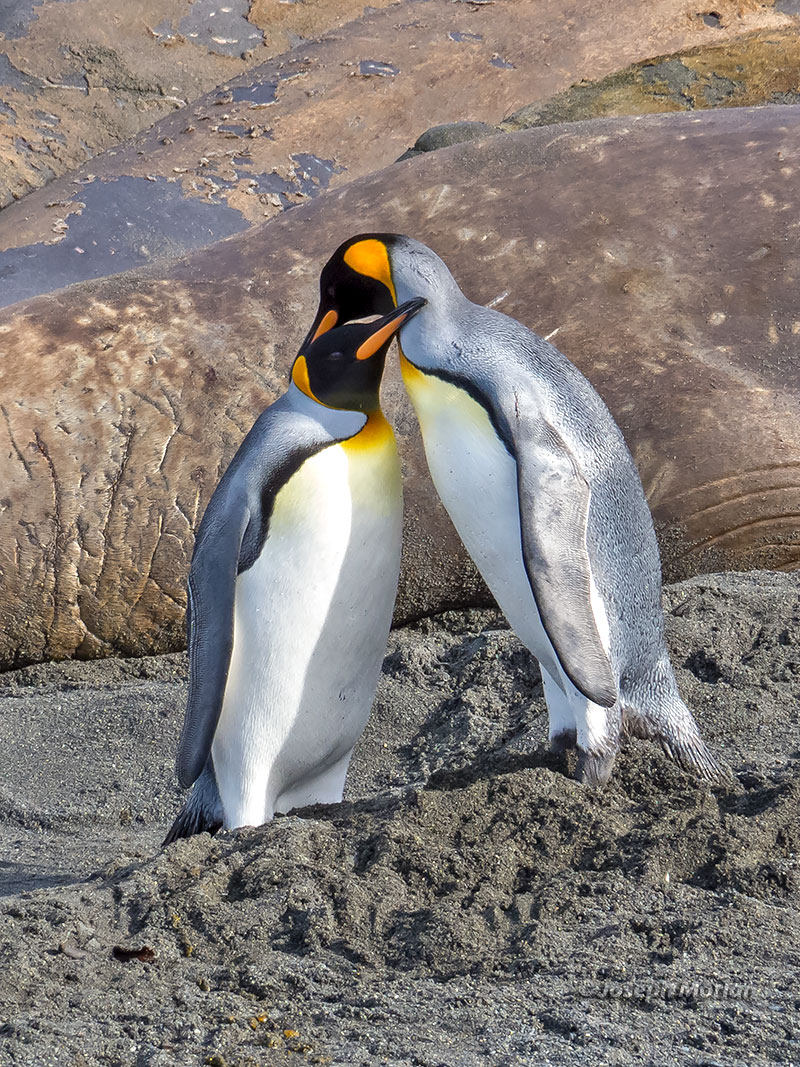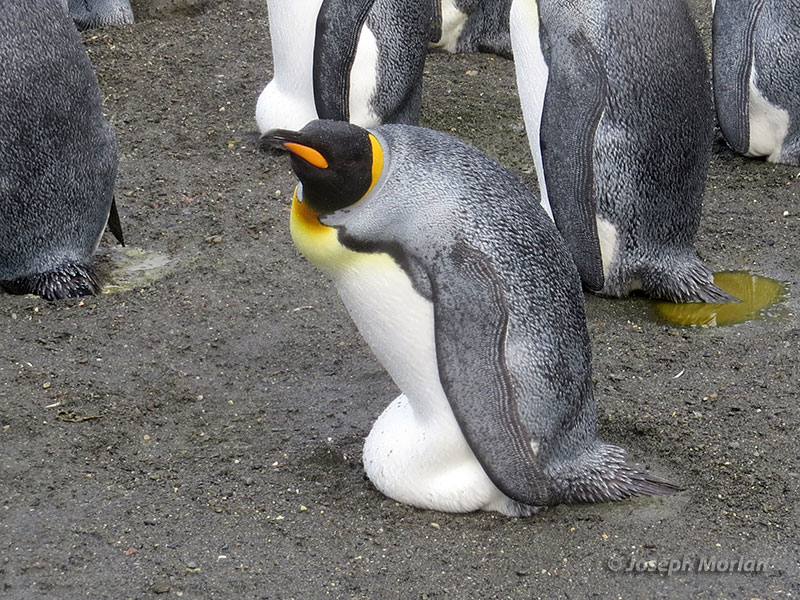



Here the light emphasizes their shiny blue-gray color. Can you guess what's in the background? King Penguins are serially monogamous with a new pair-bond formed each breeding season. Allopreening as seen here is part of their courtship ritual helping to cement the pair bond. Here the larger male is on the right. He pushed the female down nuzzling her back several times eventually leading to copulation. And if you guessed Southern Elephant Seals are in the background, you were right!
Distant humans identifiable by bright red parkas. King Penguin populations have increased dramatically in recent years. The second photo gives an overview of just part of the colony with Bertrab Glacier and mountains in the background. Poncet and Crosby (2005) estimated this colony at 25,000 breeding pairs in 2002. A 14 February 2014 survey by Foley et. al (2018) found 20,078 "nests." Recent eBird reports place the colony size at about 190,000 individuals. However, the best population estimates come from formal aerial surveys.
King and Emperor are the only penguin species who build no nest whatsoever. Instead they hold their single egg or chick on their feet protected under a fold of abdominal skin as seen here. Incubation posture is crouching with back bowed, head sunken, flippers straight almost touching the ground, and a fringe of abdominal feathers covering egg and feet. Both sexes incubate and undergo two 2-3 week periods of starvation while remaining in their one square meter territory. Average incubation time is 54 days with an addition 40 days brooding the chick. (Stonehouse 1960) .
The large chicks in the bottom photo are covered with brown down and look so different from adults that they were originally described by Latham (1821) as a new species called "Woolly Penguin." .
Canon PowerShot SX50 HS
References:
Murphy, R.C. (1936) Oceanic Birds of South America. Am. Mus. Nat. Hist.
Foley, C.M., Hart, T. & Lynch, H.J. (2018) King Penguin populations increase on South Georgia but explanations remain elusive. Polar Biol https://doi.org/10.1007/s00300-018-2271-z
Latham J. 1821. General History of Birds. London: Winchester, Jacob and Johnson.
Poncet S, Crosbie K (2005) A visitor’s guide to South Georgia. Princeton University Press, Princeton
Stonehouse, B (1960). "The King Penguin Aptenodytes patagonicus of South Georgia I. Breeding behaviour and development". Falkland Islands Dependencies Survey Scientific Report. 23: 1–81